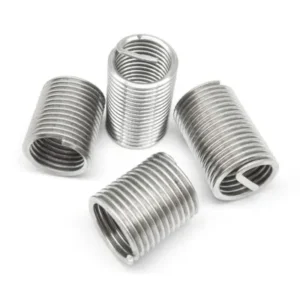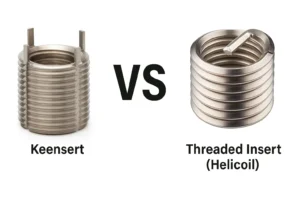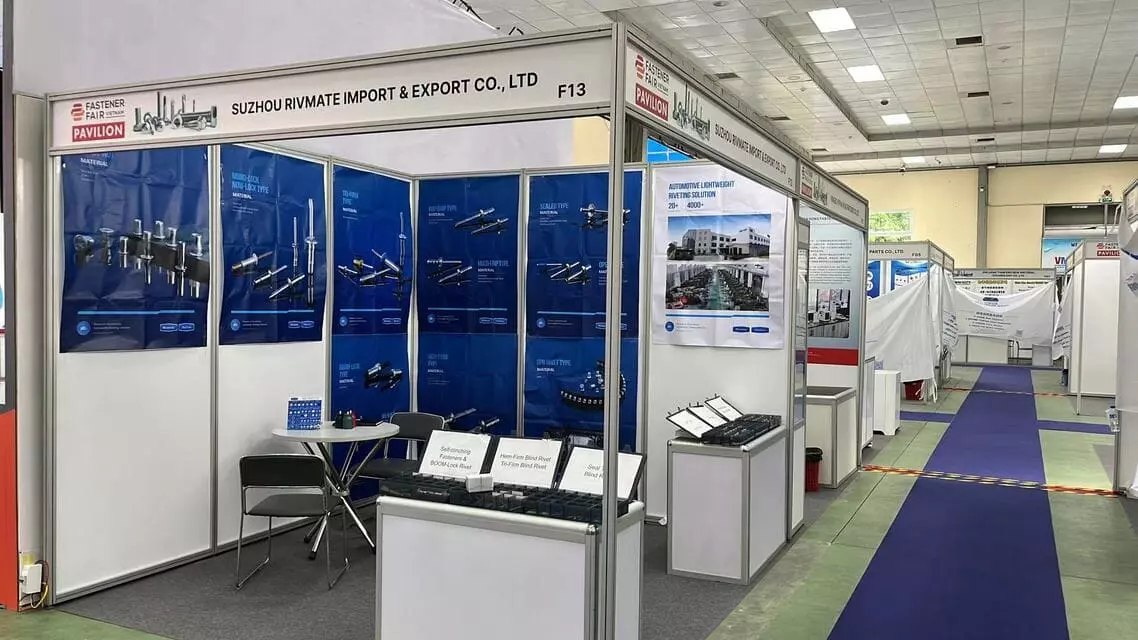Rivet Nut Price Guide: What You Need to Know
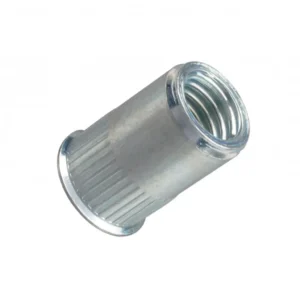
Leading Rivet Nut Manufacturer and Supplier in China

When it comes to fastening solutions for thin materials or blind installations, rivet nuts offer unmatched versatility and strength. But whether you’re sourcing for automotive, electronics, or furniture applications, understanding rivet nut price trends is essential to balancing quality and budget. In this guide, we’ll break down the key factors that influence rivet nut pricing—from materials and thread sizes to surface treatments and order volumes—so you can make informed, cost-effective decisions.
Table of Contents
What Is a Rivet Nut and Why Price Matters
A rivet nut, also known as a rivnut or blind nut, is a fastener designed to create internal threads in thin or soft materials. Its unique design allows for quick thread installation even in one-sided or closed structures, making it widely used in automotive manufacturing, electronic devices, home appliances, furniture, machinery, and construction.

How Application Influences Rivet Nut Price
The price of a rivet nut is not just a matter of purchasing cost—it directly impacts the product’s performance, assembly efficiency, and long-term reliability:
- Automotive Industry: Requires high vibration resistance and structural strength. Stainless steel or coated versions are often used, which are relatively more expensive.
- Electronics Industry: Space is limited and weight matters. Small-size or aluminum rivet nuts are common, often requiring high precision—this may lead to higher costs.
- Furniture & Home Appliances: Cost-sensitive applications typically favor carbon steel rivet nuts, balancing quality and price.
Price Affects More Than Just Cost
When choosing rivet nuts, it’s crucial to consider the overall cost rather than just the unit price:
- Low-quality rivet nuts may seem cheaper but can lead to loosening, spinning, corrosion, or even structural failure—adding hidden costs in rework and maintenance.
- High-quality rivet nuts improve product lifespan and user experience, reduce after-sales issues, and offer greater value in the long run.
Therefore, evaluating rivet nut pricing should go beyond the surface. You must consider material, performance, application fit, and supplier reliability to make the most cost-effective choice.
Key Factors That Affect Rivet Nut Price
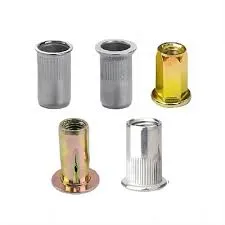
The price of a rivet nut is determined by multiple factors, not only related to its specifications and material, but also influenced by external aspects such as purchasing methods and customization requirements.
1. Material Type
Rivet nuts are commonly made from the following materials, each offering distinct characteristics, applications, and price points:
- The most economical option with good mechanical strength.
- Suitable for indoor structures or general industrial use where high corrosion resistance is not required.
- Drawback: poor corrosion resistance without surface treatment.
- High strength and excellent corrosion resistance.
- Widely used in automotive, marine, and outdoor equipment exposed to moisture or harsh environments.
- Significantly more expensive than carbon steel.
- Lightweight material ideal for electronics, aerospace, and home appliances where weight matters.
- Cost lies between carbon steel and stainless steel, offering both corrosion resistance and weight reduction.
- Excellent conductivity and corrosion resistance.
- Used in electrical applications or decorative projects.
- Considerably more expensive.
2. Thread Size
- The larger the thread size, the more material is used, increasing the cost.
- Common range: M3–M12 or imperial sizes (e.g., #6, #10, 1/4″):
- Small sizes (e.g., M3, #6): Lower price, common in precision electronics.
- Medium to large sizes (e.g., M8, M10, M12): Higher price, suitable for heavy-duty applications and industrial machinery.
3. Head Style & Body Shape
Different rivet nut shapes affect both function and production cost:
- Flat Head Rivet Nut
- The most standard and widely used type, moderate price.
- Countersunk Head Rivet Nut
- Designed to sit flush with the surface, requiring beveled holes.
- More complex to manufacture, slightly higher cost.
- Hex Body Rivet Nut
- Hexagonal shape resists rotation, ideal for soft materials.
- Requires high-precision molding, costlier than round body types.
- Knurled Body Rivet Nut
- Textured surface improves grip in soft substrates like plastic or wood.
- More complex to produce, thus higher in cost.
4. Coating & Surface Treatment
Rivet nuts may be exposed to moisture, heat, chemicals, or corrosive gases. Surface treatments enhance corrosion resistance, appearance, and durability. These treatments directly impact manufacturing cost and, therefore, price.
Zinc-Plated
- The most common and cost-effective corrosion protection.
- Suitable for most indoor applications, medium corrosion resistance.
- Low production cost.
Nickel-Plated
- Provides a brighter, more aesthetic finish in addition to corrosion protection.
- Better resistance than zinc plating; used when appearance matters.
- Medium cost.
Stainless Steel Material
- Naturally corrosion-resistant without extra coating.
- Ideal for outdoor and extreme environments.
- High raw material cost, higher overall price.
Black Oxide, Dacromet, Specialty Coatings
- Enhance resistance to heat, salt spray, or meet specific appearance requirements (e.g., black rivet nuts).
- Used in high-performance fields such as automotive or military.
- Complex processes increase production cost significantly.
5. Order Volume
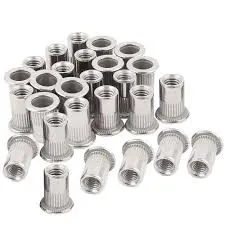
Order quantity is one of the most crucial factors affecting unit price. In industrial manufacturing, economies of scale can significantly reduce per-unit costs. Therefore, the size of the purchase order directly impacts the supplier’s pricing strategy.
Small Orders (hundreds to a few thousand pieces)
- Frequent production changes, high setup costs.
- Packaging, labor, and logistics costs cannot be evenly distributed.
- Standard or slightly higher unit prices.
- Suitable for sampling, testing, or small-scale projects—not ideal for bulk production.
Large Orders (10,000 pieces and above)
- Higher production volume improves efficiency and reduces unit manufacturing costs.
- Bulk raw material purchases reduce input costs.
- Significant discounts possible; some suppliers offer tiered pricing (e.g., 10k, 50k, 100k).
- Long-term or annual contract buyers can often negotiate better prices and payment terms.
6. Customization Requirements
Customized rivet nuts often require extra tooling, processing time, and coordination, which leads to increased pricing. Common custom requests include:
- Non-standard dimensions: Unique sizes for specialized installations.
- Custom logos (OEM/ODM): Branding engraved or stamped on the product.
- Special packaging: Custom labeling, small bags, cartons, or pallets for specific logistics needs.
- Technical documentation: Custom certifications, PPAP, RoHS/REACH, etc.
These customizations add significant complexity and may increase unit cost substantially, especially for small orders.
Summary Table: Factors Influencing Rivet Nut Prices
| Category | Details | Impact on Price |
| Material Type | Steel, Stainless Steel, Aluminum, Brass/Copper | Stainless/Brass = Higher Cost |
| Thread Size | M3–M12, Imperial Sizes | Larger Size = Higher Cost |
| Head & Body Design | Flat, Countersunk, Hex Body, Knurled | Special Shapes = Higher Cost |
| Surface Treatment | Zinc, Nickel, Dacromet, Stainless Body | More Complex = More Expensive |
| Order Volume | Small vs. Large Quantity | Higher Volume = Lower Unit Price |
| Customization | Non-standard size, logo, packaging | Increases Unit Cost Significantly |
Do You Have Any Questions?
Let Us Solve Your Problem
Typical Rivet Nut Price Range
| Thread Size | Material | Estimated Price (USD/pcs) |
| M3 | Steel | $0.02 – $0.04 |
| M3 | Stainless Steel | $0.04 – $0.08 |
| M3 | Aluminum | $0.03 – $0.07 |
| M4 | Steel | $0.025 – $0.05 |
| M4 | Stainless Steel | $0.05 – $0.10 |
| M5 | Steel | $0.03 – $0.06 |
| M5 | Stainless Steel | $0.06 – $0.12 |
| M6 | Steel | $0.04 – $0.07 |
| M6 | Stainless Steel | $0.07 – $0.14 |
| M6 | Aluminum | $0.06 – $0.10 |
| M8 | Steel | $0.06 – $0.10 |
| M8 | Aluminum | $0.08 – $0.15 |
| M10 | Steel | $0.08 – $0.13 |
| M10 | Brass / Copper | $0.15 – $0.25+ |
| M12+ | Custom Stainless / Brass | $0.20 – $0.40+ |
Notes:
- Prices shown are approximate reference ranges, based on bulk orders (10,000 pcs or more);
- Actual pricing depends on brand, packaging method, order volume, shipping distance, etc.;
- Customization requirements (e.g., laser-engraved logos, special surface treatments, non-standard dimensions) will result in price increases;
- In most cases, the general material cost ranking is: Stainless Steel > Aluminum Alloy > Carbon Steel.
Price Differences by Region

Asia (e.g., China, Taiwan, India)
- Pricing: Typically the lowest, especially for standard rivet nut sizes and materials like steel and aluminum.
- Advantages:
- Highly competitive unit prices due to scale of production.
- Wide material options and high flexibility in customization.
- Strong OEM/ODM capabilities.
- Disadvantages:
- Higher shipping costs and longer delivery times (especially for air freight).
- Import duties and customs clearance procedures.
- Minimum Order Quantity (MOQ) may be higher for some suppliers.
Europe (e.g., Germany, France, Italy)
- Pricing: Generally mid to high, depending on the country and level of customization.
- Advantages:
- High-quality manufacturing standards (e.g., ISO, DIN compliance).
- Shorter lead times for European customers.
- Easier communication and local after-sales service.
- Disadvantages:
- Higher labor and material costs.
- Limited flexibility on low-MOQ orders compared to Asian suppliers.
North America (e.g., USA, Canada, Mexico)
- Pricing: Often the highest, especially for stainless steel or custom rivet nuts.
- Advantages:
- Fast delivery and better logistics within the region.
- Easier coordination and faster service response.
- Better suited for urgent or low-volume orders.
- Disadvantages:
- High production costs (labor, environmental compliance, etc.).
- Less diversity in product range compared to Asian manufacturers.
China Suppliers vs. Local Manufacturers
| Factor | China Suppliers | Local Manufacturers (EU/US) |
| Price | Lower unit cost | Higher due to labor and compliance |
| MOQ | Often requires larger MOQ | More flexible for small orders |
| Lead Time | Longer (2–6 weeks incl. shipping) | Faster (1–2 weeks domestic) |
| Customization | Strong OEM/ODM options | Limited or costly |
| Shipping | Adds time and cost | Short and cost-effective |
| Product Range | Very broad (standard + non-standard) | Focused on standard items |
| Communication | May involve time zone/language gaps | Easier coordination |
Summary
- If price and customization are priorities → Asia (especially China) is your best bet.
- If speed, small quantity, or local compliance is key → Local manufacturers in EU/US are better.
- A hybrid approach—bulk from Asia + urgent from local—can often maximize cost-effectiveness and flexibility.
How to Get the Best Rivet Nut Price

Getting the best price on rivet nuts isn’t just about choosing the cheapest supplier — it’s about understanding the full picture, from quotation to delivery. Here are some practical steps to help you secure the most cost-effective deal without compromising quality:
1. Request Quotes from Multiple Suppliers (RFQ)
- Always send RFQs (Request for Quotation) to multiple suppliers for the same specifications.
- This gives you a clearer picture of market pricing and potential negotiation room.
- Compare not just unit price, but also payment terms, lead time, and added services.
2. Understand MOQ and Shipping Options
- Many suppliers, especially in Asia, have a Minimum Order Quantity (MOQ) requirement. The price per piece often drops significantly once you meet higher order volumes.
- Evaluate different shipping methods (sea freight, air freight, courier) to see how they impact the total landed cost.
- Sometimes, slightly increasing your order quantity can result in a lower overall cost per unit, even including shipping.
3. Ask About Samples and First-Run Testing
- Before committing to a large order, ask if the supplier can provide free or low-cost samples.
- Testing samples ensures that the rivet nuts meet your specifications and avoids costly mistakes in bulk orders.
- Some suppliers also offer trial orders with reduced MOQs for new customers.
4. Explore Packaging and Cost Optimization
- Discuss packaging options with your supplier. Some might offer bulk packaging that reduces weight and volume, lowering shipping costs.
- If your product is resold or needs branding, ask about custom packaging options — but be aware this may affect price and MOQ.
Bonus Tip: Build Long-Term Supplier Relationships
- Establishing long-term cooperation with a trusted manufacturer can lead to better pricing, faster service, and priority during high-demand periods.
- Loyalty is often rewarded with better credit terms or exclusive offers.
Final Tips for Buyers

When purchasing rivet nuts, price is just one part of the equation. To make a smart buying decision, consider the following tips:
1. Don’t Focus Solely on Unit Price
- A lower unit price may come at the cost of inconsistent quality, longer delivery times, or lack of technical support.
- Always evaluate the total value — including material reliability, delivery lead time, and after-sales service.
2. Use a Price vs. Performance Comparison Table
- Create a simple comparison chart that includes:
- Unit price
- Material type
- Supplier location
- Lead time
- Customer reviews or track record
- This helps balance cost-efficiency and product performance, especially when selecting from multiple suppliers.
3. Work with Verified or Certified Suppliers
- Always verify whether the supplier is a certified manufacturer or a middleman.
- Look for ISO certifications, company history, or request factory audit reports if possible.
- Reliable suppliers reduce your risk of defective products or supply chain delays.
Do You Have Any Questions?
Let Us Solve Your Problem
Buy Rivet Nuts from Rivetfix
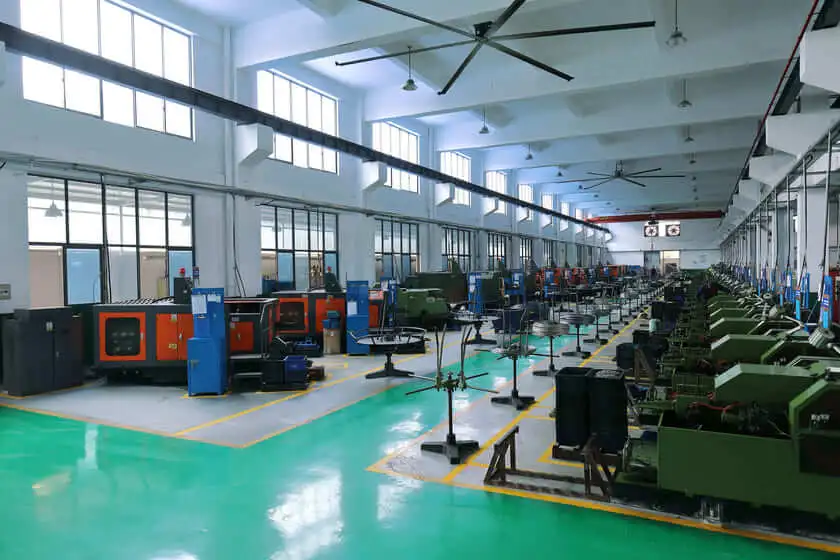
As a leading fastener manufacturer in China with more than 15 years in the industry, Rivetfix are committed to providing first-class quality fasteners and responsive services to the world.
Rivetfix offers a wide range of rivet nuts and rivet nut tools designed to meet the unique demands of your projects. Rivetfix ensures you have the right solution for every application. Choose Rivetfix for versatile, cost-effective, and durable fastening solutions tailored to your specific needs. In addition, we can also provide customized rivet nuts service according to your requirements.
Contact us for project advice and the latest rivet nuts and rivet nut tools quote!
Get High Quality Rivet Nuts Quote!
Send Your Rivet Nut Request
For more than 20 years, Rivetfix has helped customers solve many rivet nuts sourcing needs and technical challenges.
Have a question? Contact us and we’ll provide you with the perfect solution.


